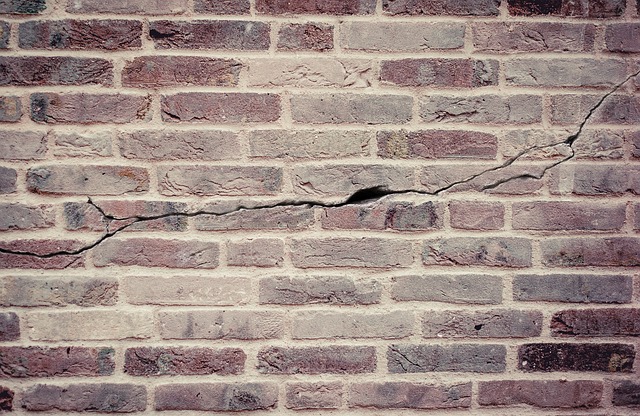Noticing a crack in your foundation can be a scary experience. The basement is the silent repairing guard of the house, and the inner center guarantees its durability and safety. Yet a tiny riverside golf hole can lead to a major improvement in a person’s overall health if it is neglected over time. When unresolved, the foundation cracks build up an avalanche of problems downstream, and maintenance costs may follow. It may also pose safety risks. Now, what makes prompt crack repair critical, and what can be done to address the foundational cracks?
Table of Contents
Understanding Foundation Cracks: Not All Cracks Are Created Equal
The silver lining is that not all foundation cracks indicate dire situations requiring immediate action. Even hairline cracks widths less than ¼ inch might be just unusual surface defects, which are not usually dangerous. Nonetheless, larger cracks, including those showing a stair-step pattern or running horizontally, can be signs of more serious structural issues. These cracks can be used as a foundation for settlement, meaning the area under your feet is slowly shifting or compacted unevenly. A foundation contractor professional should be consulted to ensure the correct diagnosis of the extent of the crack and to devise a corrective plan.
Beyond Cosmetics: Why Foundation Cracks Matter
Foundation cracks are bigger than just a cosmetic issue. Thus, Moisture could find a way to get into the subsoil, leading to damage. Water penetrates ceilings and pelmets; it increases the breeding rate of molds and mildew that may harmfully affect your family’s health. Besides, the water can get leaked into the foundation, which weakens the foundation, causing structural damage and danger to the occupants. Moreover, foundation movements due to uncorrected cracks may lead to uneven floors, misaligned doors and windows, and cracks in drywall inside the home. These problems can be visually unappealing and diminish your home’s value.
The Domino Effect: How Ignoring Cracks Can Lead to Costly Repairs
The duration of neglecting foundation cracks will result in costlier-to-repair damages soon. As far as the groundwork is concerned, the defects and cracks deteriorate over time. It can grow into a real problem in a reasonably short time: the crack may expand and allow more water infiltration while the resulting foundation movements become more intense. Therefore, any delay in correcting foundation issues could lead to more expensive repairs such as underpinning, which provides more structural support, or slab jacking for leveling damaged floors. The worst-case scenario for locating the foundation’s problem after being ignored for a long time is structural instability requiring conducting major reconstruction projects. Many extra expenses come with water issues, such as mold replenishment or strengthening withholding walls, which will add up fast and exceed the cost of foundation repairs.
Early Detection is Key: Signs You Need Foundation Repair
Beyond the visible cracks on your foundation, other signals may also imply the requirement for foundation repair. It is a warning from looking at the uneven floors, especially these dips and slopes, which are very well recognizable. Sticking doors or windows that used to work properly can show up the foundation moving if the house settles or undergoes foundation repair. The space between an external wall and the missing interior drywall could indicate the requirement for proper inspection by the professional. Regular checking of the foundation is especially pertinent in the case of older homes or those whose base presents construction challenges. The initially precise detection will make intervention possible and mitigate against the escalating of minor malfunctions into more significant issues.
Taking Action: What to Do When You Discover a Crack
When you discover a crack in your foundation, it isn’t comforting. So try not to panic. The first thing to do is eliminate water leaks around the foundation and stop any further moisture from reaching there. There may be clearing out clogged gutters and rerouting downspouts off the foundation. Don’t place cumbersome furniture or other heavy objects close to the foundation crack, as this will further stretch the home’s foundation.
In summary, contact a professional contractor specializing in such repairs for an expert diagnosis of the problem. Try to choose highly experienced, licensed, and insured contractors. Weighing evaluation of multiple estimates helps the customer realize your options and fees to prevent a rash decision.
Foundation Repair Options: Tailored Solutions for Your Home
Different foundation repair methods are available, depending on the issue. The basement shrinking sets up the foundation’s support by excavating under it and drilling piers along the perimeter to take the immense load of the building. Slabjacking is a method that requires an injection underneath concrete slabs of a novel slurry to lift and make them stable. The application of wall repair methods entails filling in the cracks and bending of foundation walls, which may be achieved using several techniques, including wall anchors or helical piers.
Conclusion
A small foundation crack should always be noticed. Addressing foundation problems as soon as possible could save you from lots of future expenditures and will ensure that your house does not collapse or get damaged in the future. Such measures to be done at the early stage provide the reachability of the fault, thus preventing it from being extolled and the possibility of becoming a dangerous situation. When you invest in this peace of mind, the house supports you literally and remains a symbol of your downfall-proof success. Book today to fix it on time, and don’t let insecurity or damage to your home linger around.
Featured Image by Neypomuk-Studios from Pixabay




